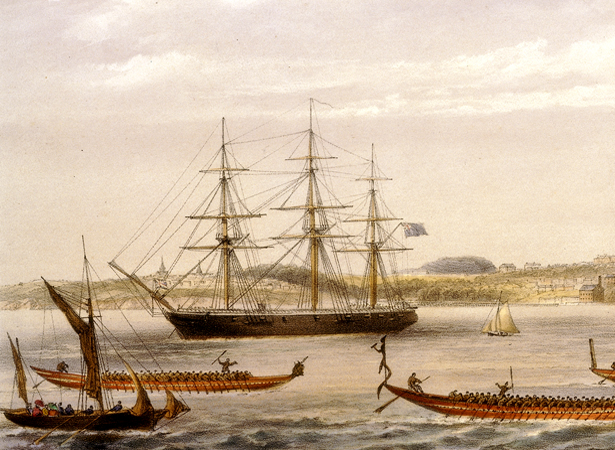
In October 1863, during the first phase of the Waikato War, the colonial government sent HMS Miranda, a screw corvette (steamship), and the gunboat HMS Sandfly to blockade the Firth of Thames. Their mission was to prevent supplies reaching the Kīngitanga forces which were fighting on the Waikato River, and to patrol the area for ‘rebel’ Māori.
On 3 November, Miranda attempted to land boats at Pūkorokoro, a kāinga on the south-western corner of the Firth of Thames. Māori fired several shots from the shore, missing the boats. Miranda returned fire, launching rockets and shells at the village. At least one shell exploded in a whare. The inhabitants of Pūkorokoro fled. According to Ngāti Paoa oral traditions, men, women and children were killed in this attack.
The following morning, Miranda fired on a nearby kāinga before landing about 40 sailors and marines, who found the village empty. They tried to retrieve a schooner which had been captured from a settler. When they were unable to move the vessel, they destroyed it. The landing party then returned to their boats and went up the creek as far as another kāinga, where they destroyed a number of waka.
In late November, a Crown force built the Miranda Redoubt (fort) near Pūkorokoro. This was the easternmost of a chain of redoubts erected between the Firth of Thames and the Waikato River to cut off an important Kīngitanga supply route.
In December, a government official reported that the Māori who had fled from Pūkorokoro had had to move several more times as troops and marines continued to scour the area. These people were now living in ‘wretched’ conditions in a swamp south of Waitakaruru, at the north-western edge of the Hauraki Plains.
External links
How to cite this page
'Naval attack on Pūkorokoro, Firth of Thames', URL: https://nzhistory.govt.nz/page/naval-attack-pukorokoro-firth-thames, (Ministry for Culture and Heritage), updated 9-Nov-2023

Community contributions